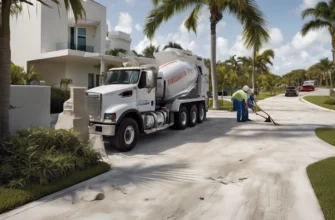- Exploring Miami’s Paint Removal Costs: A Professional Insight
- Cost Range for Miami’s Paint Removal: A Professional Insight
- Florida’s Paint Removal Cost: Factors to Consider
- Material Cost for Miami’s Paint Removal: Expert Analysis
- Estimating Material Quantity for Paint Removal Jobs
- Time Required for Paint Removal: Project Size Matters
- Essential Professional Tools for Effective Paint Removal
- Step-by-Step Process for Paint Removal: Avoiding Common Mistakes
Exploring Miami’s Paint Removal Costs: A Professional Insight
Paint removal is a crucial task that often requires the expertise of a professional handyman. Whether you are looking to remove old paint from your residence or commercial property in Miami, it is essential to understand the costs involved in such a project. In this article, we will provide you with a comprehensive insight into Miami’s paint removal costs, taking into account various factors and expert analysis.
Cost Range for Miami’s Paint Removal: A Professional Insight
Before embarking on a paint removal project, it is crucial to have a clear understanding of the costs involved. The cost range for paint removal in Miami typically varies based on the size of the project, the complexity of the paint layers, and the type of surface being treated. To give you a better idea, here is a breakdown of the cost range for paint removal:
| Project Size | Cost Range |
|---|---|
| Small (up to 100 sq. ft.) | $100 – $300 |
| Medium (100 – 500 sq. ft.) | $300 – $800 |
| Large (500 – 1000 sq. ft.) | $800 – $1500 |
| Extra Large (1000+ sq. ft.) | $1500+ |
Please note that these figures are just estimates and can vary depending on various factors. It is advisable to contact a professional handyman for an accurate quote based on your specific requirements.
Florida’s Paint Removal Cost: Factors to Consider
Several factors come into play when considering the cost of paint removal in Florida. These factors can significantly impact the overall expenses of the project. Here are some key factors to consider:
-
Surface Condition: The condition of the surface to be treated plays a crucial role in determining the cost of paint removal. Surfaces with multiple layers of paint or those with extensive damage may require additional preparation and labor, thus increasing the overall cost.
-
Type of Paint: Different types of paint, such as oil-based or latex-based, may require different removal techniques. Oil-based paints are typically more challenging to remove and may require specialized methods, which can add to the cost.
-
Accessibility: The accessibility of the surface can also affect the cost of paint removal. If the surface is difficult to reach or requires additional equipment and scaffolding, it may increase the overall expenses.
-
Environmental Considerations: In some cases, environmental regulations and requirements may impact the cost of paint removal. For instance, if lead-based paint is present, additional safety measures and disposal procedures may be necessary, which can add to the overall cost.
Considering these factors will help you understand the variables that contribute to the total cost of your paint removal project.
Material Cost for Miami’s Paint Removal: Expert Analysis
When it comes to paint removal, the cost of materials can vary depending on the method and the surface being treated. Here is an expert analysis of the typical material costs involved in Miami’s paint removal projects:
| Material | Cost Range |
|---|---|
| Chemical Paint Strippers | $10 – $50 per gallon |
| Heat Guns | $20 – $150 for basic models |
| Sandpaper | $5 – $20 per pack |
Chemical paint strippers are commonly used for larger surface areas and are available in different formulations, each catering to specific needs. Heat guns are suitable for smaller areas and can be rented or purchased. Sandpaper is needed for final touch-ups and smoothing the surfaces. The quantity of materials required will depend upon the size and complexity of the project.
Estimating Material Quantity for Paint Removal Jobs
To estimate the quantity of materials required for your paint removal job, you need to consider factors such as the surface area and the number of layers of paint to be removed. Here is a general guideline to help you estimate the material quantity:
-
Chemical Paint Strippers: On average, one gallon of chemical paint stripper can cover approximately 100-200 square feet of surface area. However, this can vary depending on the type and thickness of the paint layers.
-
Heat Guns: Heat guns are typically used for spot treatments and smaller areas. The quantity required will depend on the size of the project and the number of layers to be removed.
-
Sandpaper: The amount of sandpaper needed will depend on the surface area and the level of smoothing required. It is advisable to have a variety of grits available, ranging from coarse to fine.
By considering these estimates, you can better plan your material requirements and budget for your paint removal project.
Time Required for Paint Removal: Project Size Matters
The time required for paint removal can vary significantly depending on the size and complexity of the project. Larger projects with multiple layers of paint may take longer to complete. Here is a rough estimate of the time required based on project size:
| Project Size | Time Estimate |
|---|---|
| Small (up to 100 sq. ft.) | 1-2 days |
| Medium (100 – 500 sq. ft.) | 2-4 days |
| Large (500 – 1000 sq. ft.) | 4-6 days |
| Extra Large (1000+ sq. ft.) | 1+ weeks |
Please note that these time estimates are just rough guidelines and can vary depending on various factors such as the complexity of the paint layers and the surface condition.
Essential Professional Tools for Effective Paint Removal
To ensure effective and efficient paint removal, professional handymen utilize specialized tools. Here are some essential tools commonly used for paint removal projects:
-
Paint Scrapers: These tools are designed to scrape away old paint from various surfaces. They come in different sizes and shapes to cater to different project requirements.
-
Chemical Paint Strippers: Chemical paint strippers are applied to the surface to soften and dissolve the paint. Various formulations are available, depending on the type of paint and surface being treated.
-
Heat Guns: Heat guns use hot air to soften the paint, making it easier to scrape away. They are particularly useful for spot treatments and smaller areas.
-
Sanding Equipment: Sanders, sandpaper, and sanding blocks are essential for smoothing the surfaces after the paint removal process. They help create a clean and even surface for repainting or refinishing.
These tools, along with proper safety equipment, ensure a professional and thorough paint removal process.
Step-by-Step Process for Paint Removal: Avoiding Common Mistakes
To achieve a successful paint removal project, it is essential to follow a step-by-step process while avoiding common mistakes. Here is a general outline of the paint removal process:
-
Preparation: Start by preparing the work area. Remove any furniture or belongings that may hinder the paint removal process. Cover nearby surfaces to protect them from potential damage.
-
Testing: Test the paint for lead, especially if your property was built before 1978. Follow proper safety procedures if lead-based paint is detected.
-
Surface Cleaning: Clean the surface to be treated, removing any dirt, grease, or loose particles. This ensures proper adhesion of the paint removal products.
-
Application of Paint Remover: Apply the chosen paint remover using the recommended method. Follow the manufacturer’s instructions and ensure proper ventilation during the application process.
-
Waiting Period: Allow the paint remover to work according to the recommended waiting time. This allows the product to soften and dissolve the paint layers effectively.
-
Paint Removal: Use the appropriate tools, such as paint scrapers or heat guns, to remove the softened paint. Work systematically, starting from one corner and moving across the surface.
-
Surface Smoothing: After the paint removal process, use sanding equipment to smooth the surface. Gradually progress from coarse to fine grits to achieve the desired finish.
-
Surface Cleaning: Clean the surface thoroughly to remove any residue from the paint removal process.
By following this step-by-step process and avoiding common mistakes such as applying excessive force or using incorrect tools, you can achieve a successful paint removal project.
In conclusion, understanding Miami’s paint removal costs is essential for planning and budgeting your project. Factors such as project size, surface condition, material costs, and time required all contribute to the overall expenses. By following the professional insight provided in this article, you can make informed decisions and ensure a successful and cost-effective paint removal project in Miami and its neighboring cities.







